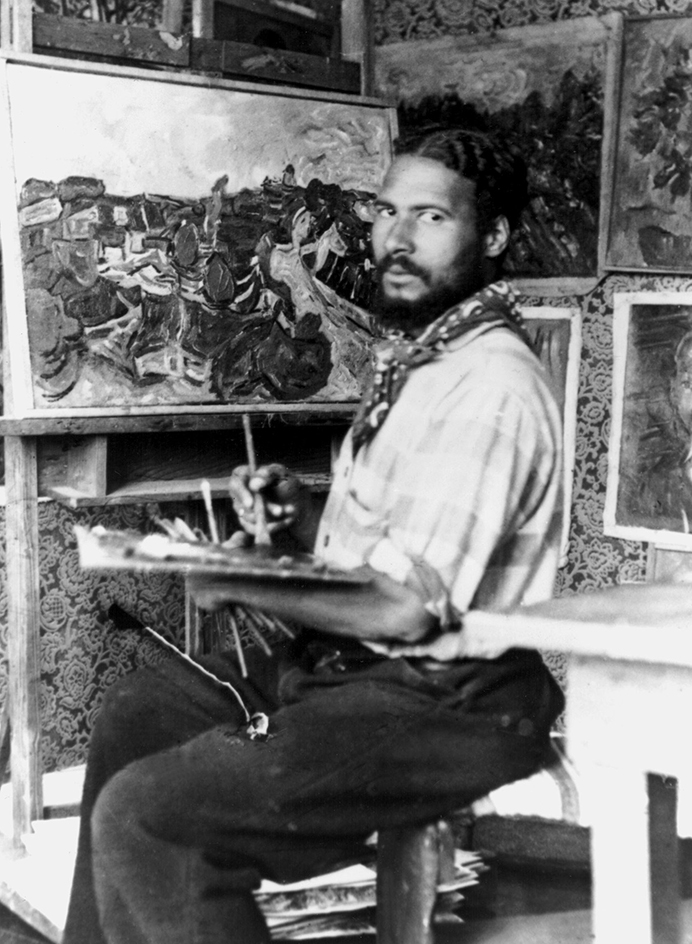Johnson, William H. (1901-1970), was an African American painter known for his interpretations of African American life. Many of his works depict life in the rural South of his youth or the liveliness of the Harlem district of New York City.

William Henry Johnson was born on March 18, 1901, in Florence, South Carolina. He attended the National Academy of Design in New York City in the early 1920’s. Johnson went to Paris in 1926 and soon settled in southern France. There, his painting reflected the modern art styles of the time. He was especially influenced by the work of the French Expressionist artist Chaim Soutine, with its emphasis on distorted forms and its strong emotional content (see Expressionism ). In 1930, Johnson married Holcha Krake, a Danish textile artist. The couple settled in Denmark. They traveled through Scandinavia and northern Africa, where Johnson was influenced by folk art styles there.
In 1938, Johnson returned to the United States. There, he produced works in his mature style, painting scenes of black life that gained him his greatest recognition. His most notable works typically portray flattened figures against a semiabstract background. Objects can be identified but do not look realistic. One of the best known of these works is Cafe (1939-1940), a scene of a well-dressed black couple in a Harlem cafe. Another important work of Johnson’s in this style is Going to Church (1940-1941). This painting shows a black family in the rural South riding to church in an oxcart.
Johnson suffered from mental illness the last part of his life. He spent the years from 1947 until his death on April 3, 1970, in a state hospital in New York City.
